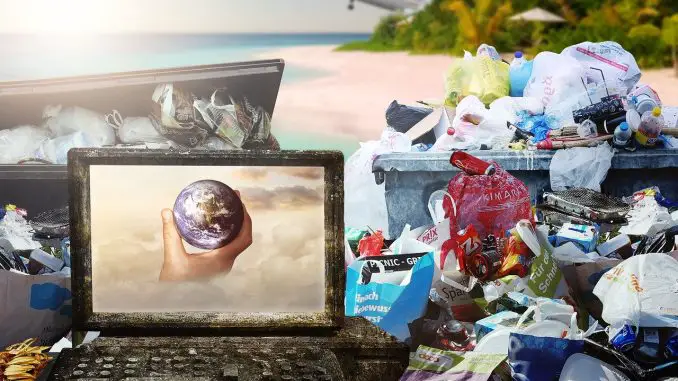
Waste and garbage – everyone has them, but no one talks about them. We are happy to showcase our shopping finds, but we are not as proud of the back of consumption – our garbage. Yet garbage and recycling are an inevitable part of our lives, which we need to keep track of in order to live sustainably and save the climate. Learn more about our growing garbage dumps and what we can do for them.
It’s time to look at garbage and waste in a new way. Our old way of producing, consuming, using and throwing things is not working. We need to deal with Earth’s resources more efficiently, otherwise they will not suffice for an ever-expanding world population. It’s time for a circular economy!
In a circular economy, almost nothing is wasted. Products last a long time, we repair, repair and reuse them, and when they have to be discarded, they go to recycling and the materials are reused as much as possible. The amount of waste is reduced. All stages, both consumption and what happens after consumption are important in a circular economy.
Here are five strong arguments for throwing the wear and tear community in the trash can:
1. The world is 9 percent circular. This means that nine percent of the raw materials such as minerals, metals and biomass used in the world economy are recycled every year. For a sustainable world and for us to reach the climate goals, more needs to be recycled.
2. The amount of garbage in the world is expected to almost double by 2050. The largest increase will be in growing economies.
3. In 2016, an average of 0.74 kg of waste (municipal and industrial) was produced for every person on earth every day. This means that a total of 2 billion tonnes of waste was produced.
4. The waste is unevenly distributed throughout the world. For example, Europe and Central Asia have more than twice as much waste per person as Sub-Saharan Africa. In Europe and Central Asia, 392 kg of garbage per person was produced in 2016, while sub-Saharan Africa produced 174 kg of garbage per person.
5. How is Sweden doing? Well, Sweden ranks number 14 out of 28 countries in Europe in a survey of how circular our economies are, that is, how well we recycle, recycle and reduce waste. We in Sweden are good at municipal recycling, but we have a large amount of waste, and that draws us down compared to other European countries. Especially the large amount of food waste in Sweden is problematic. Who was at the top of Europe’s most circular economy? Well, Germany, followed by Britain and France.
But what do the gadgets actually contain? We need to be aware of this in order to be able to recycle the material safely when a gadget has reached the end of its life. Today, it is very difficult to get information about what is included in the products from the production, for example if there are toxic substances that need to be taken into account, and then recycling is difficult.
At least the most dangerous substances (Substances of Very High Concern) should be phased out in materials that are allowed in the circular economy in the EU.
• For the EU to work much harder for the same rules for the production and declaration of content to apply worldwide. At least the most dangerous substances (Substances of Very High Concern) should be declared in all countries, and then phased out as quickly as possible for the environment and consumers. Common rules around the world make it safer for consumers and create a level playing field for businesses.

Leave a Reply